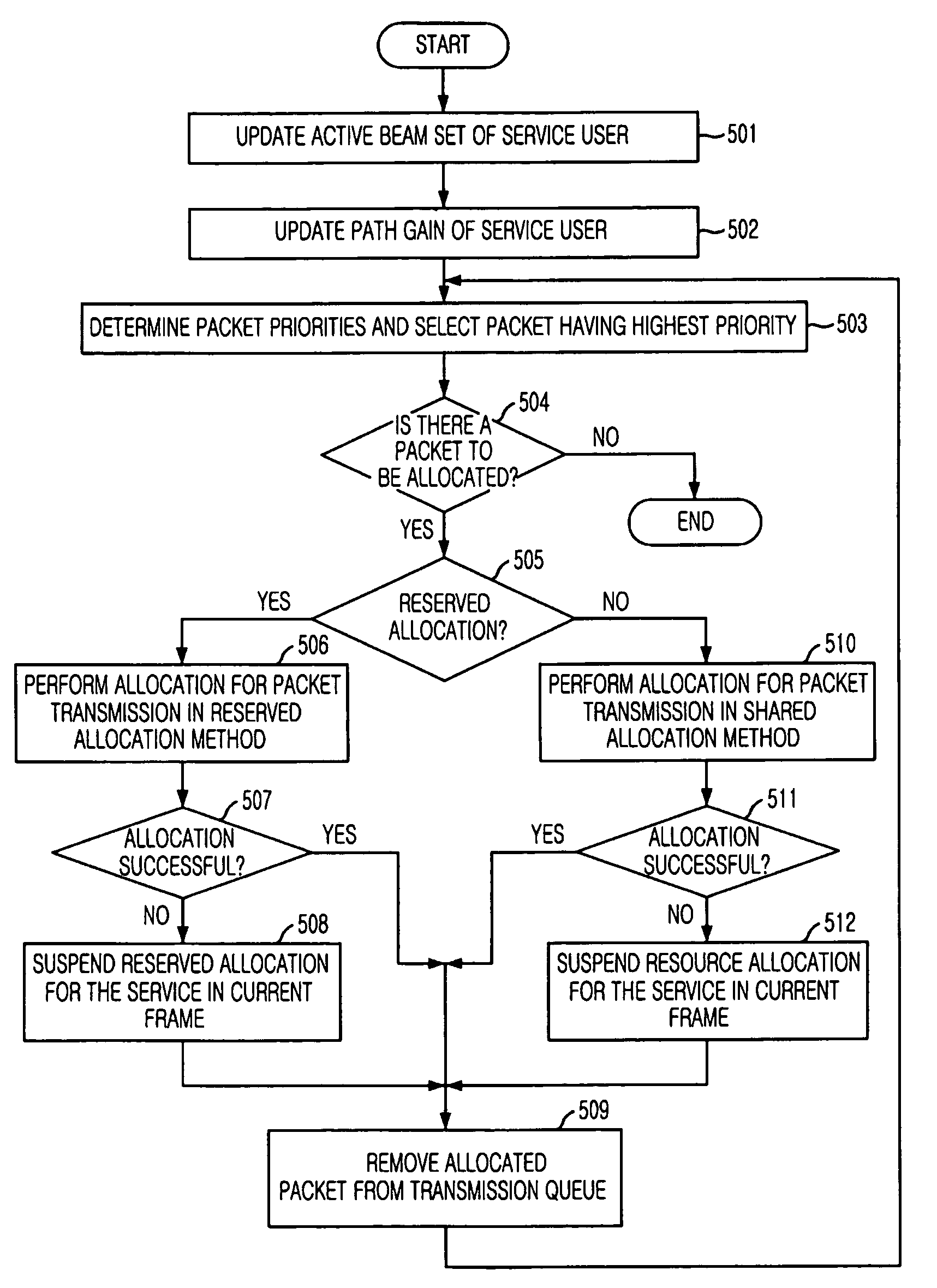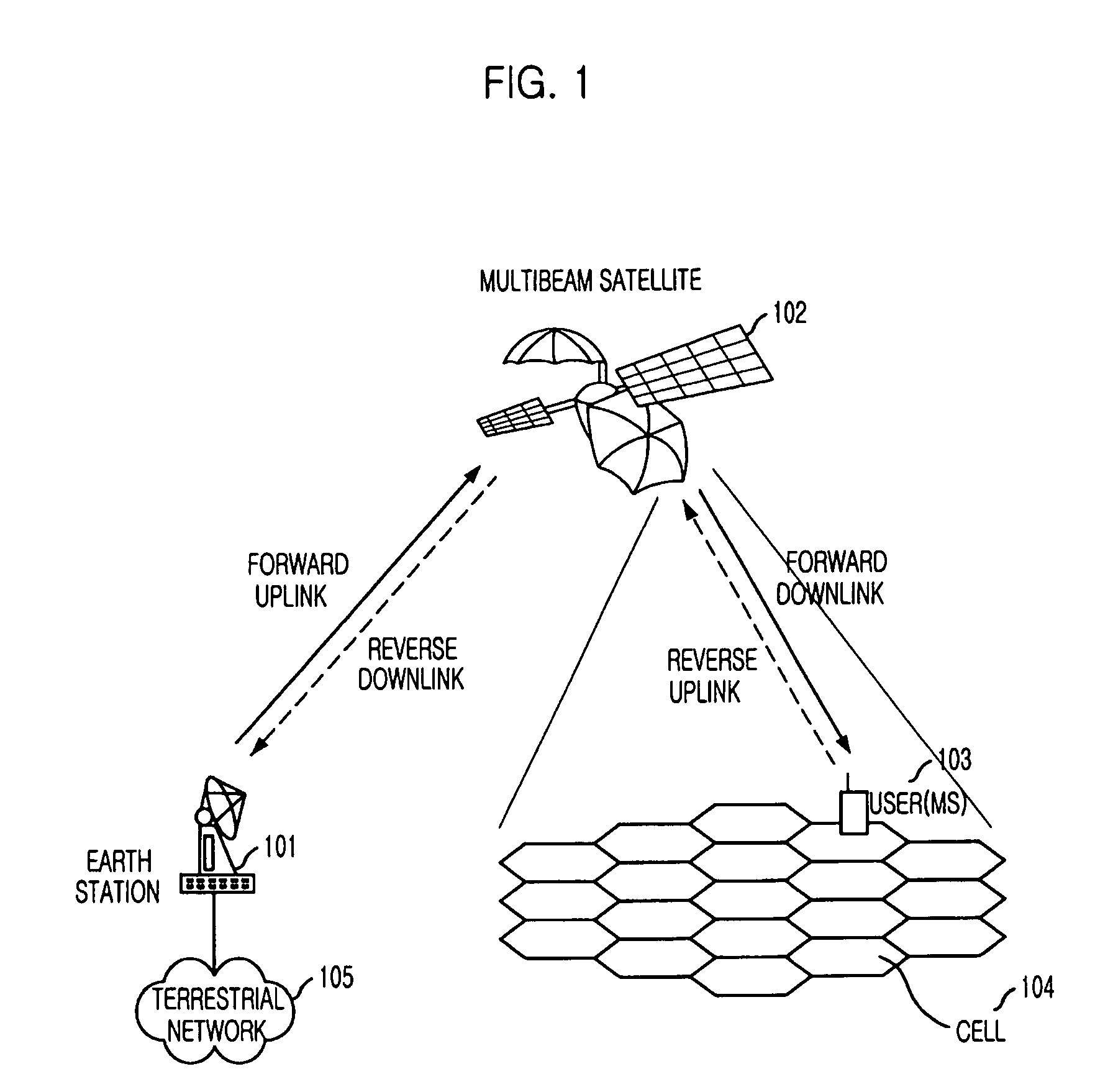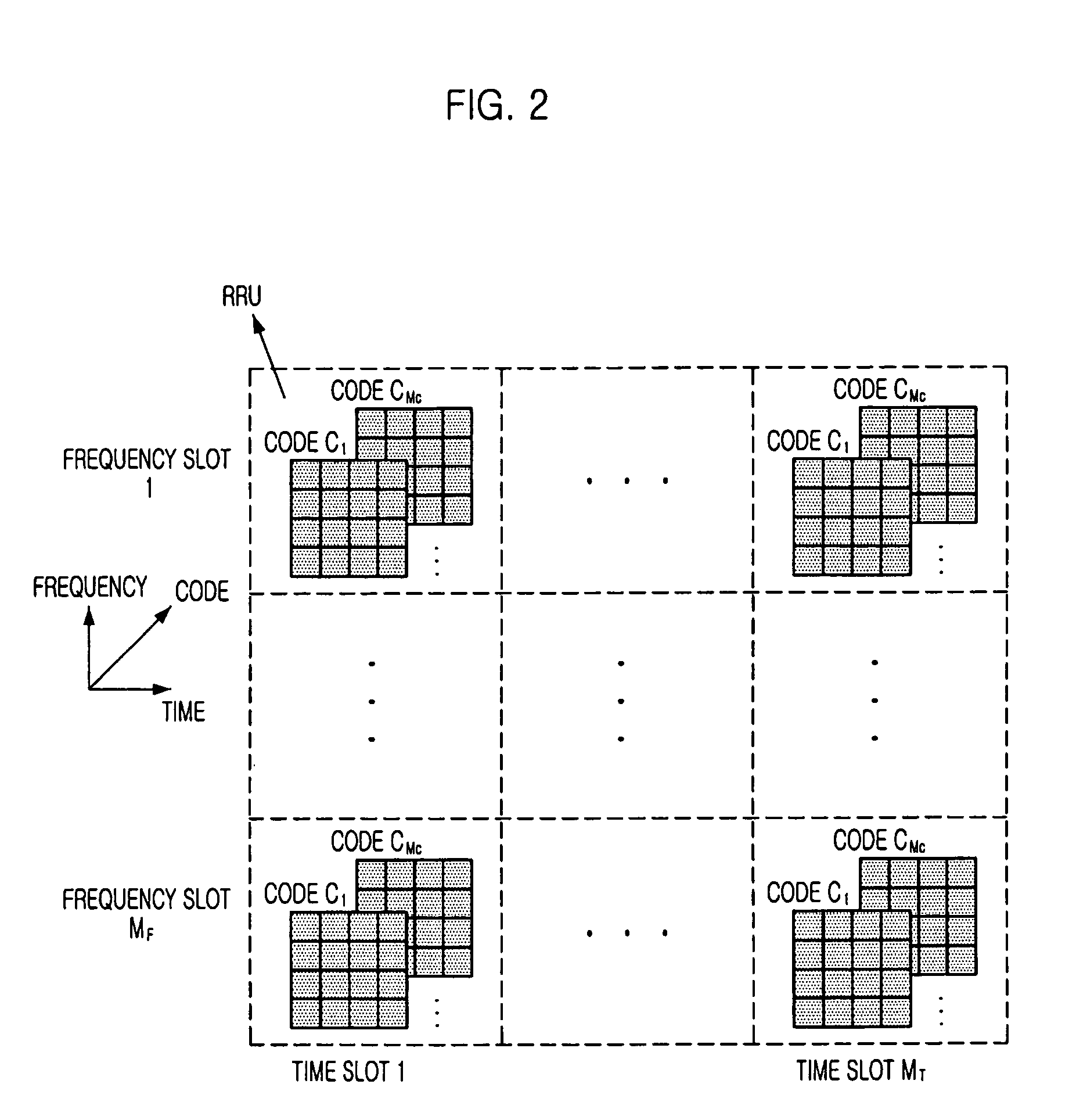Adaptive packet transmission method for transmitting packets in multibeam satellite communication system
a satellite communication system and packet transmission technology, applied in the field of adaptive packet transmission method for transmitting data packets through a forward link in a multibeam satellite communication system, can solve the problems of insufficient radio resource fixed allocation, no data may be generated, and the circuit-switched system is not suitable for packet transmission services, etc., to achieve efficient utilization of limited radio capacity and minimize interference
- Summary
- Abstract
- Description
- Claims
- Application Information
AI Technical Summary
Benefits of technology
Problems solved by technology
Method used
Image
Examples
Embodiment Construction
[0022]Other objects and aspects of the invention will become apparent from the following description of the embodiments with reference to the accompanying drawings, which is set forth hereinafter.
[0023]FIG. 1 is an exemplary diagram describing a cellular mobile satellite communication system using a multibeam satellite in accordance with an embodiment of the present invention. In the drawing, the reference numeral “101” denotes an earth station; “102”, a multibeam satellite; “103”, a mobile station; “104”, a cell; and “105”, a terrestrial network.
[0024]In a cellular satellite mobile system using a multibeam satellite, a service area is divided into a plurality of cells 104, as in the terrestrial cellular mobile communication system and each cell is serviced by a beam. A user (i.e., a mobile station) 1-3 forms a communication link with the multibeam satellite 102 through a beam that covers the cell at which the mobile station 103 is located, that is, a beam to which the mobile statio...
PUM
 Login to View More
Login to View More Abstract
Description
Claims
Application Information
 Login to View More
Login to View More - R&D
- Intellectual Property
- Life Sciences
- Materials
- Tech Scout
- Unparalleled Data Quality
- Higher Quality Content
- 60% Fewer Hallucinations
Browse by: Latest US Patents, China's latest patents, Technical Efficacy Thesaurus, Application Domain, Technology Topic, Popular Technical Reports.
© 2025 PatSnap. All rights reserved.Legal|Privacy policy|Modern Slavery Act Transparency Statement|Sitemap|About US| Contact US: help@patsnap.com



